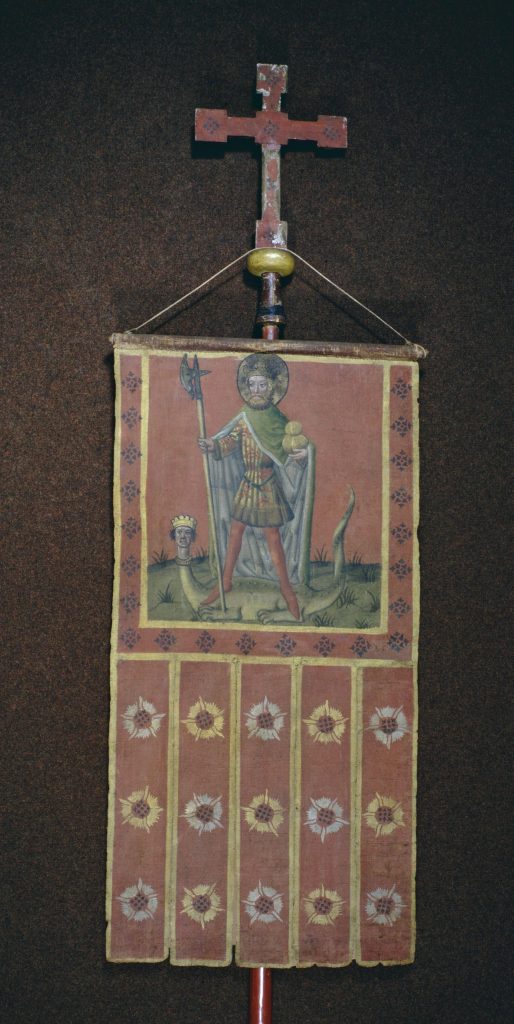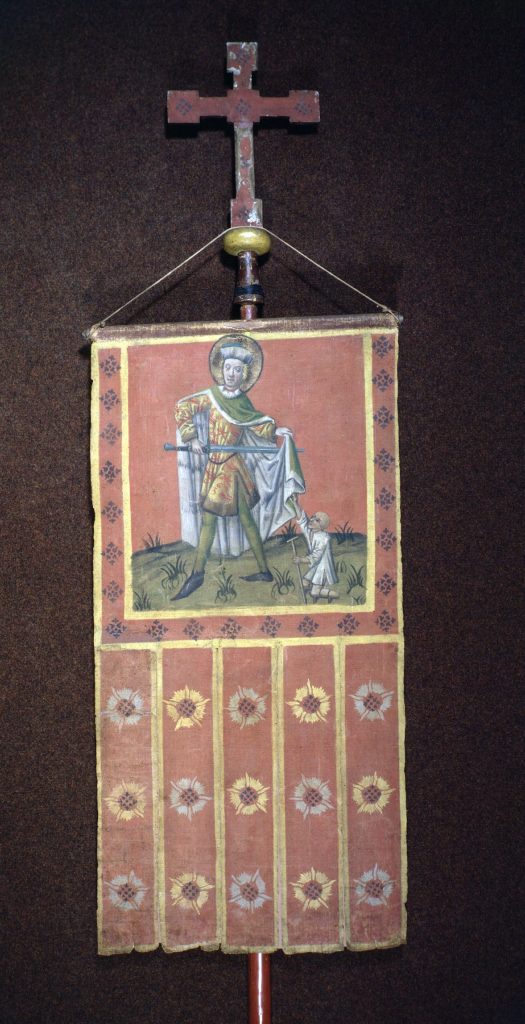This staff with banner, which originates from Lavik on the Sognefjord, entered the collection as early as 1826. The red painted shaft ends in a cross with square ends, whose surface is decorated with black stencilled rosettes. The same motifs recur on the banner, which is attached to a horizontal wooden rod. Its lower half consists of five hanging strips decorated with stylized flowers. The upper half, continuously framed, features the holy Norwegian king Olav on one side and St Martin and the beggar on the other, both against a red background.


The crowned St Olav wears a short tunic and a cloak of vair fur and stands on a monster with a human head that symbolises heathendom. In one hand he holds his attribute, an axe with a long shaft, and in the other an unclear object consisting of two spheres. St Martin, portrayed as a well-dressed, beardless man, cuts off part of his mantle to give to the beggar who kneels at his feet.
Banners were carried during processions on specific days of the liturgical year, in this case 29 July (St Olav) and 11 November (St Martin). Banners must have been present in practically every medieval church. The inventory of Ylmheim church (now Ølmheim, Sogn) dating from 1321 mentions three, two with Marian images and one showing St John the Evangelist. As a consequence of their transient nature, medieval banners are rare today. The monastery at Lüne near Lüneburg (Lower Saxony, Germany) preserves two examples of painted linen, dating from 1410-1420. Bendix Bendixen believed that the Lavik banner originated in northern Germany.
Northern Germany (?), 1450-1475
From Lavik (Sogn), in the museum since 1826
Pinewood (staff and banner rod), linnen (banner), painted
H 358 cm (staff), H 110 x W 53 cm (banner)
Inv. no. MA 16
